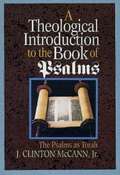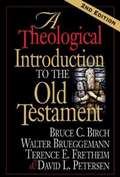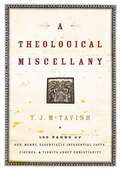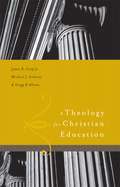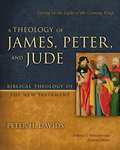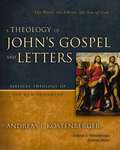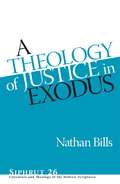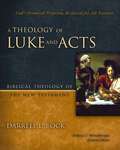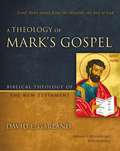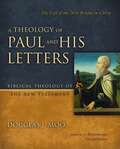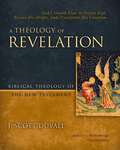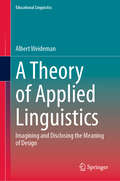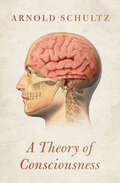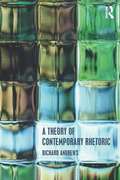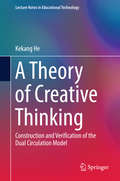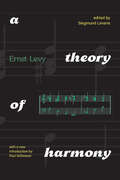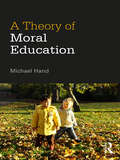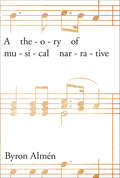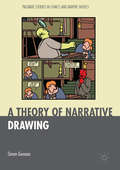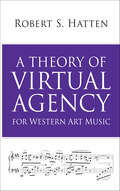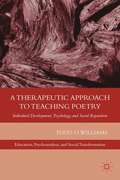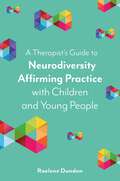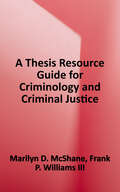- Table View
- List View
A TextBook of Cost and Management Accounting 10 Edition - PART-I
by M. N. AroraThis book provides the students with thorough grounding in cost concepts, cost behaviour and methods, and techniques of cost and management accounting with an understanding of the uses and limitations of cost and financial data for managerial operations. The text of the subject matter has been presented in a student-friendly, simple and intelligible manner. Every discussion involving conceptual complexity is immediately illustrated by a numerical example. In addition, the book contains a liberal sprinkling of charts and diagrams so as to make the subject easily understandable and highlight its finer points. The subject matter has been organized on â first things firstâ basis for its logical presentation that sustains interest. The approach of the book is examination oriented. Thus, a good number of problems and solutions have been included in its chapters. Theoretical and numerical questions have been mostly selected from various examinations. Objective type questions have been given to serve as self test by students. This is an ideal book for self study.
A Theological Introduction to the Book of Psalms: The Psalms as Torah
by J. Clinton McCann JR.Taking his point of departure from the newest frontier of research, McCann reads the psalms in the context of their final shape and canonical form. He interprets the psalms as scripture as well as in their character as songs, prayers, and poetry from Israel's history. McCann's intent is to contribute to the church's recovery of the psalms as torah--as instruction, as a guide to prayer, praise of God, and pious living. The explicit connections which McCann draws from the psalms to the New Testament and to Christian faith and life are extensive, making his work suitable for serious study of the psalms in academic and in church settings. An appendix examines the tradition of singing the psalms and offers suggestions for the use of the psalms in worship.
A Theological Introduction to the Old Testament: 2nd Edition
by Walter Brueggemann Bruce C. Birch Terence E. Fretheim David L. PetersenThis book has become a standard text in seminary and university classrooms. The purpose of this second edition is to help readers come to a critically informed understanding of the Old Testament as the church's scripture. This book introduces the Old Testament both as a witness of ancient Israel and as a witness to the church and synagogue through the generations of those who have passed these texts on as scripture.The authors of this volume share a commitment to the interpretation of the Old Testament as a central resource for the life of the church today. At the same time, they introduce the Old Testament witness in a manner that honors the importance of biblical scholarship in helping students engage the variety of theological voices within the Old Testament.This second edition gives special attention to deepening and broadening theological interpretations by including, for example, issues related to gender, race, and class. It also includes more detailed maps and charts for student use.
A Theological Miscellany: 160 Pages of Odd, Merry, Essentially Inessential Facts, Figures, and Tidbits about Christianity
by T.J. McTavishEver felt mortally embarrassed when all your friends are discussing the merits of "the 5 points of Calvinism" and you don't have the foggiest idea what they're talking about? Ever kicked yourself for not knowing which popes reigned the shortest amount of time? (First on the list is Pope Urban VII, who ruled for a whopping 13 days.)Well, where else could you find the answer to all your problems, but in A Theological Miscellany-a maddeningly addictive cornucopia of trivia and smorgasbord of stuff that will keep you up late at night, reading just one more page. The best little book of trivia and oddities you'll ever find. . . . And if not the best, then certainly in the top ten.
A Theology For Christian Education
by Michael Anthony James R. Estep Greg AllisonWhat is "Christian" about Christian education; how is it different from non-Christian education? A Theology for Christian Education examines this question in depth and argues that the doctrines of systematic theology should drive the content, purpose, and methods of the educational program of the church. The book states: "Christian education is distinct from other kinds of education in that its aim is the transformation of the whole person into the likeness of Christ (Col. 1 :28). Christian education is the process of accomplishing this aim. "A Theology for Christian Education dedicates chapters to examining particular doctrines and their implications for Christian education. It is the only serious academic text to offer a systematic presentation of the intersection of theology and Christian education from a conservative evangelical perspective.
A Theology of James, Peter, and Jude: Living in the Light of the Coming King
by Andreas J. Kostenberger Peter H. DavidsIn this volume, Peter Davids offers a comprehensive study of the General or Catholic Epistles of James, 1-2 Peter, and Jude, which are often insufficiently covered in more general New Testament introductions, theologies, and surveys. Before discussing a theology of each of the four letters, Davids first deals with their common aspects—their shared background in the Greco-Roman world and a similar Christology, view of the source of sin, and eschatology—thus justifying their being treated together. In the chapters that follow, Davids embarks upon a theological reading of each letter informed by its social-rhetorical understanding—what they meant in the context of their original cultural settings—including: a survey of recent scholarship, a discussion of relevant introductory issues, a thematic commentary, a treatment of important theological themes, and a discussion of the place of the letter in the biblical canon and its contribution to New Testament theology. The Biblical Theology of the New Testament (BTNT) series provides upper college and seminary-level textbooks for students of New Testament theology, interpretation, and exegesis. Pastors and discerning theology readers alike will also benefit from this series. Written at the highest level of academic excellence by recognized experts in the field, the BTNT series not only offers a comprehensive exploration of the theology of every book of the New Testament, including introductory issues and major themes, but also shows how each book relates to the broad picture of New Testament theology.
A Theology of John's Gospel and Letters: The Word, the Christ, the Son of God (Biblical Theology of the New Testament Series)
by Andreas J. KostenbergerA Theology of John’s Gospel and Letters introduces the first volume in the BTNT series. Building on many years of research and study in Johannine literature, Andreas Köstenberger not only furnishes an exhaustive theology of John’s Gospel and letters, but also provides a detailed study of major themes and relates them to the Synoptic Gospels and other New Testament books. Readers will gain an in-depth and holistic grasp of Johannine theology in the larger context of the Bible. D. A. Carson (Trinity Evangelical Divinity School) says about Köstenberger’s volume that “for the comprehensiveness of its coverage in the field of Johannine theology (Gospel and Letters), there is nothing to compare to this work.” I. Howard Marshall (University of Aberdeen) writes, “This book is a ‘first’ in many ways: the first volume that sets the pattern for the quality and style of the new Biblical Theology of the New Testament series published by Zondervan; the first major volume to be devoted specifically to the theology of John’s Gospel and Letters at a high academic level; and the first volume to do so on the basis that here we have an interpretation of John’s theology composed by an eyewitness of the life and passion of Jesus.” The Biblical Theology of the New Testament Series The Biblical Theology of the New Testament (BTNT) series provides upper college and seminary-level textbooks for students of New Testament theology, interpretation, and exegesis. Pastors and discerning theology readers alike will also benefit from this series. Written at the highest level of academic excellence by recognized experts in the field, the BTNT series not only offers a comprehensive exploration of the theology of every book of the New Testament, including introductory issues and major themes, but also shows how each book relates to the broad picture of New Testament theology.
A Theology of Justice in Exodus (Siphrut: Literature and Theology of the Hebrew Scriptures #26)
by Nathan BillsThis book traces the theme of justice throughout the narrative of Exodus in order to explicate how yhwh’s reclamation of Israel for service-worship reveals a distinct theological ethic of justice grounded in yhwh’s character and Israel’s calling within yhwh’s creational agenda.Adopting a synchronic, text-immanent interpretive strategy that focuses on canonical and inner-biblical connections, Nathan Bills identifies two overlapping motifs that illuminate the theme of justice in Exodus. First, Bills considers the importance of Israel’s creation traditions for grounding Exodus’s theology of justice. Reading Exodus against the backdrop of creation theology and as a continuation of the plot of Genesis, Bills shows that the ethical disposition of justice imprinted on Israel in Exodus is an application of yhwh’s creational agenda of justice. Second, Bills identifies an educational agenda woven throughout the text. The narrative gives heightened attention to the way yhwh catechizes Israel in what it means to be the particular beneficiary and creational emissary of yhwh’s justice. These interpretative lenses of creation theology and pedagogy help to explain why Israel’s salvation and shaping embody a programmatic applicability of yhwh’s justice for the wider world.This volume will be of substantial interest to divinity students and religious professionals interested in the themes of exodus, exile, and return.
A Theology of Luke and Acts: God’s Promised Program, Realized for All Nations (Biblical Theology of the New Testament Series)
by Darrell L. Bock Andreas J. KostenbergerThis groundbreaking work by Darrell Bock thoroughly explores the theology of Luke’s gospel and the book of Acts. In his writing, Luke records the story of God working through Jesus to usher in a new era of promise and Spirit-enablement so that the people of God can be God’s people even in the midst of a hostile world. It is a message the church still needs today. Bock both covers major Lukan themes and sets forth the distinctive contribution of Luke-Acts to the New Testament and the canon of Scripture, providing readers with an in-depth and holistic grasp of Lukan theology in the larger context of the Bible. I. Howard Marshall: “A remarkable achievement that should become the first port of call for students in this central area of New Testament Theology.” Craig S. Keener: “Bock’s excellent exploration of Luke’s theological approach and themes meets an important need in Lukan theology.”
A Theology of Mark's Gospel: Good News about Jesus the Messiah, the Son of God
by David E. Garland Andreas J. KostenbergerA Theology of Mark’s Gospel is the fourth volume in the BTNT series. This landmark textbook, written by leading New Testament scholar David E. Garland, thoroughly explores the theology of Mark’s Gospel. It both covers major Markan themes and also sets forth the distinctive contribution of Mark to the New Testament and the canon of Scripture, providing readers with an in-depth and holistic grasp of Markan theology in the larger context of the Bible. This substantive, evangelical treatment of Markan theology makes an ideal college- or seminary-level text.
A Theology of Paul and His Letters: The Gift of the New Realm in Christ (Biblical Theology of the New Testament Series)
by Douglas J. MooA landmark study of the apostle's writings by one of the world's leading Pauline scholarsWinner of the 2022 ECPA Christian Book Award for Bible Reference WorksThis highly anticipated volume gives pastors, scholars, and all serious students of the New Testament exactly what they need for in-depth study and engagement with one of Christian history's most formative thinkers and writers. A Theology of Paul and His Letters is a landmark study of the apostle's writings by one of the world's leading Pauline scholars Douglas J. Moo. Fifteen years in the making, this groundbreaking work is organized into three major sections:Part 1 provides an overview of the issues involved in doing biblical theology in general and a Pauline theology in particular. Here Moo also sets out the methodological issues, formative influences, and conceptual categories of Paul's thought.Part 2 moves on to Paul's New Testament writings, where Moo describes each Pauline letter with particular relevance to its theology.Part 3 offers a masterful synthesis of Paul&’s theology under the overarching theme of the gift of the new realm in Christ.Engaging, insightful, and wise, this substantive, evangelical treatment of Paul's theology offers extensive engagement with the latest Pauline scholarship without sacrificing its readability. This volume brings insights from over thirty years of experience studying, teaching, and writing about Paul into one comprehensive guide that will serve readers as a go-to resource for decades to come.ABOUT THE SERIES: The Biblical Theology of the New Testament (BTNT) series provides upper college and seminary-level textbooks for students of New Testament theology, interpretation, and exegesis. Pastors and discerning theology readers alike will also benefit from this series. Written at the highest level of academic excellence by recognized experts in the field, the BTNT series not only offers a comprehensive exploration of the theology of every book of the New Testament, including introductory issues and major themes, but also shows how each book relates to the broad picture of New Testament Theology.
A Theology of Revelation: God's Grand Plan to Defeat Evil, Rescue His People, and Transform His Creation (Biblical Theology of the New Testament Series)
by J. Scott DuvallA Theology of Revelation by J. Scott Duvall in Zondervan's Biblical Theology of the New Testament series provides a comprehensive look at the theology of John's Apocalypse. One of only a few dedicated theologies of Revelation, Duvall's book leaves no stone unturned in the study of the final book of the Christian canon of Scripture. This thoroughly researched study includes:an investigation into the historical framework of the book: authorship, date, and occasion and purpose;a survey of literary-theological foundations: genre, text and canonicity, grammar and symbolic language, use of the Old Testament, literary structure, and interpretation; anda full literary-theological reading of the book, culminating in an exploration of the book's most significant theological themes: God, Jesus Christ, the Holy Spirit, the people of God, worship, discipleship, salvation, God's judgment of evil, and the new creation.Readers will find here a study that is clearly written, attentive to the historical-literary context, with special attention given to the primary theological themes in the book. Perhaps above all, readers will have their hope in God and his amazing plan reinforced and strengthened.
A Theory of Applied Linguistics: Ιmagining and Disclosing the Meaning of Design (Educational Linguistics #65)
by Albert WeidemanThis book adopts as conceptual focus the technical mode of experience, exploring this characteristic mode of design as the angle from which the discipline of applied linguistics takes its cue. What makes applied linguistic concept formation possible? A number of elementary concepts and ideas are so basic to the discipline that they can neither be ignored nor avoided. These ‘primitives’ are identified by examining the connections among the technical and other modalities, such as the spatial, the physical, the social, economic, aesthetic, juridical and the ethical. A theory of applied linguistics must be robust enough to do justice to different modernist and postmodernist paradigms operating in the discipline, systematically identifying and assessing their strengths and blind spots. The book offers a response to the question of the usefulness of theory. The principles of design revealed in the theoretical analysis are given shape in developing imaginative language interventions to solve vexing language problems not for the sake of theory, but for the benefit of those affected. The book is intended for use both as a reference and as a comprehensive, unifying perspective of what the field is, by scholars in applied linguistics and related fields (TESOL, ESL, ESP, EAP, SLA studies, language assessment and testing, language policy development), by postgraduate students or those who teach or study applied linguistics.
A Theory of Consciousness
by Arnold SchultzAn examination of the underpinning of philosophical thought—consciousness—through a study of the physiology of the central nervous system. Philosophy begins with an acknowledgment of consciousness as an internal experience. Many renowned thinkers—from Descartes (&“I think, therefore I am&”) to John Dewey and his theory of inquiry—assume without further ado that consciousness is necessary to experience. Famous philosophies have been founded on the choice of a mode of thought and its consistent use. A Theory of Consciousness maintains that there are a number of different types of thinking which lead to a variety of logical results; that everyone is capable of following these differing schools of thought, though usually favoring by habit one more than another; and that everyone trusts the results of a particular coordination while employing it and often while following it in the expression of another thinker. Author Arnold Schultz maintains that before these various modes of thought can be considered, it is necessary to explain the phenomenon of consciousness in terms of the energies of the central nervous system. In this work, Schultz covers such subjects as: direct versus reflective consciousness, bodily awareness, logic and mathematics, kinesthetic and ontic sensations, affectation, passive and active referral, and more.
A Theory of Contemporary Rhetoric
by Richard AndrewsA Theory of Contemporary Rhetoric describes, explains, and argues the overarching theory of contemporary rhetoric. This current view of rhetoric brings together themes in the communication arts, including political literary criticism; bi- and multi-lingualism; multimodality; framing as an artistic and sociological device for composition and interpretation; literacy in the digital age; and the division between fiction and ‘non-fiction’ in language/literature studies. Chapters explore the implications of rhetoric for particular aspects of the field. Discussions throughout the book provide illustrations that ground the material in practice. As an overarching theory in the communication arts, rhetoric is elegant as a theoretical solution and simple as a practical one. It asks such questions as who is speaking/writing/composing? to whom? why? what is being conveyed? and how is it being conveyed? Acknowledging the dirth of recent works addressing the theory of rhetoric, this book aims to fill the existing theoretical gap and at the same time move the field of language/literature studies forward into new territory. It provides the keynote theoretical guide for a generation of teachers, teacher educators and researchers in the fields of English as a subject; English as a second, foreign or additional language; and language study in general.
A Theory of Creative Thinking: Construction and Verification of the Dual Circulation Model (Lecture Notes in Educational Technology)
by Kekang HeThis book examines research on creative thinking, both current and historical. It explores two dimensions of human thought (time and space) and two modes of thinking (conscious and unconscious) as well as both left and right brain functions and artistic and scientific creative activities. The book proposes a "Double Circulation" model of creative thinking and argues that imagery thinking, intuitive thinking and logical thinking are main parts of creative thinking and that dialectical thinking and horizontal-vertical thinking are the guides for highly complex problem-solving thoughts and strategies. The book focuses on education and psychology and also covers how to use ICT to promote students' creative thinking skills. Researchers will benefit from the "Double Circulation" model, which provides a new perspective on conducting creative thinking research. The book is also a valuable resource for graduate students in the fields of educational technology and psychology and for all readers who are interested in creative thinking.
A Theory of Harmony: With A New Introduction by Paul Wilkinson
by Ernst LevyErnst Levy was a visionary Swiss pianist, composer, and teacher who developed an approach to music theory that has come to be known as "negative harmony." Levy's theories have had a wide influence, from young British performer/composer Jacob Collier to jazz musicians like Steve Coleman. His posthumous text, A Theory of Harmony, summarizes his innovative ideas. A Theory of Harmony is a highly original explanation of the harmonic language of the modern era, illuminating the approaches of diverse styles of music. By breaking through age-old conceptions, Levy was able to reorient the way we experience musical harmony.British composer/music pedagogue Paul Wilkinson has written a new introduction that offers multiple points of entry to Levy’s work to make this text more accessible for a new generation of students, performers, and theorists. He relates Levy's work to innovations in improvisation, jazz, twentieth-century classical music, and the theoretical writings of a wide range of musical mavericks, including Harry Partch, Hugo Riemann, and David Lewin. Wilkinson shows how A Theory of Harmony continues to inspire original musical expression across multiple musical genres.
A Theory of Moral Education
by Michael HandChildren must be taught morality. They must be taught to recognise the authority of moral standards and to understand what makes them authoritative. But there’s a problem: the content and justification of morality are matters of reasonable disagreement among reasonable people. This makes it hard to see how educators can secure children’s commitment to moral standards without indoctrinating them. In A Theory of Moral Education, Michael Hand tackles this problem head on. He sets out to show that moral education can and should be fully rational. It is true that many moral standards and justificatory theories are controversial, and educators have an obligation to teach these nondirectively, with the aim of enabling children to form their own considered views. But reasonable moral disagreement does not go all the way down: some basic moral standards are robustly justified, and these should be taught directively, with the aim of bringing children to recognise and understand their authority. This is an original and important contribution to the philosophy of moral education, which lays a new theoretical foundation for the urgent practical task of teaching right from wrong.
A Theory of Musical Narrative (Musical Meaning and Interpretation)
by Byron AlménByron Almén proposes an original synthesis of approaches to musical narrative from literary criticism, semiotics, historiography, musicology, and music theory, resulting in a significant critical reorientation of the field. This volume includes an extensive survey of traditional approaches to musical narrative illustrated by a wide variety of musical examples that highlight the range and applicability of the theoretical apparatus. Almén provides a careful delineation of the essential elements and preconditions of musical narrative organization, an eclectic analytical model applicable to a wide range of musical styles and repertoires, a classification scheme of narrative types and subtypes reflecting conceptually distinct narrative strategies, a wide array of interpretive categories, and a sensitivity to the dependence of narrative interpretation on the cultural milieu of the work, its various audiences, and the analyst. A Theory of Musical Narrative provides both an excellent introduction to an increasingly important conceptual domain and a complex reassessment of its possibilities and characteristics.
A Theory of Narrative Drawing (Palgrave Studies in Comics and Graphic Novels)
by Simon GrennanThis book offers an original new conception of visual story telling, proposing that drawing, depictive drawing and narrative drawing are produced in an encompassing dialogic system of embodied social behavior. It refigures the existing descriptions of visual story-telling that pause with theorizations of perception and the articulation of form. The book identifies and examines key issues in the field, including: the relationships between vision, visualization and imagination; the theoretical remediation of linguistic and narratological concepts; the systematization of discourse; the production of the subject; idea and institution; and the significance of resources of the body in depiction, representation and narrative. It then tests this new conception in practice: two original visual demonstrations clarify the particular dialectic relationships between subjects and media, in an examination of drawing style and genre, social consensus and self-conscious constraint. The book's originality derives from its clear articulation of a wide range of sources in proposing a conception of narrative drawing, and the extrapolation of this new conception in two new visual demonstrations.
A Theory of Virtual Agency for Western Art Music (Musical Meaning and Interpretation)
by Robert S. HattenIn his third volume on musical expressive meaning, Robert S. Hatten examines virtual agency in music from the perspectives of movement, gesture, embodiment, topics, tropes, emotion, narrativity, and performance. Distinguished from the actual agency of composers and performers, whose intentional actions either create music as notated or manifest music as significant sound, virtual agency is inferred from the implied actions of those sounds, as they move and reveal tendencies within music-stylistic contexts. From our most basic attributions of sources for perceived energies in music, to the highest realm of our engagement with musical subjectivity, Hatten explains how virtual agents arose as distinct from actual ones, how unspecified actants can take on characteristics of (virtual) human agents, and how virtual agents assume various actorial roles. Along the way, Hatten demonstrates some of the musical means by which composers and performers from different historical eras have staged and projected various levels of virtual agency, engaging listeners imaginatively and interactively within the expressive realms of their virtual and fictional musical worlds.
A Therapeutic Approach To Teaching Poetry
by Todd O. WilliamsExplains how the study of poetry, by providing experiences similar to those produced by poetry therapy, can help students discover themselves and develop their potential to effect change in the world.
A Therapist’s Guide to Neurodiversity Affirming Practice with Children and Young People
by Raelene DundonIn this honest and practical guide, autistic therapist Raelene Dundon explores and demystifies how neurodiversity affirming principles can be easily applied to therapeutic practice.Covering essential considerations for working with neurodivergent clients such as presuming competence, promoting autonomy and respecting communication styles, and providing advice on the best affirming approaches in therapy including how to accommodate sensory needs and encourage self-advocacy, Raelene provides easy-to-implement ways to make your practice inclusive and empowering for neurodivergent children and young people.The deficit model is out. It's time to become neurodiversity affirming.
A Thesis Resource Guide for Criminology and Criminal Justice
by Frank P. Williams III Marilyn D. McShaneThis handbook is a comprehensive guide to developing and writing graduate level research. It takes the reader on a step-by-step journey through the entire thesis process from initial ideas to a completed product or even a published article. Examples from actual student theses provide concrete illustrations of each step and function as a starting point for one's own project. Tips for organizing tasks and completing them on time help orient readers to the research process and give them confidence to achieve their own research goals. Unique step-by-step guide for successfully completing the thesis projectfrom development through defense. Examples from theses done by students provide concrete illustrations and a starting point for ideas and discussion. Broad range of quantitative and qualitative thesis methodologies gives readers an overview of the basic tools of the research process. Tips for organizing tasks and completing the project on time. Those looking for assistance with writing a thesis.
A Third University Is Possible (Forerunners: Ideas First)
by la papersonA Third University is Possible unravels the intimate relationship between the more than 200 US land grant institutions, American settler colonialism, and contemporary university expansion. Author la paperson cracks open uncanny connections between Indian boarding schools, Black education, and missionary schools in Kenya; and between the Department of Homeland Security and the University of California. Central to la paperson&’s discussion is the &“scyborg,&” a decolonizing agent of technological subversion.Drawing parallels to Third Cinema and Black filmmaking assemblages, A Third University is Possible ultimately presents new ways of using language to develop a framework for hotwiring university &“machines&” to the practical work of decolonization. Forerunners: Ideas First is a thought-in-process series of breakthrough digital publications. Written between fresh ideas and finished books, Forerunners draws on scholarly work initiated in notable blogs, social media, conference plenaries, journal articles, and the synergy of academic exchange. This is gray literature publishing: where intense thinking, change, and speculation take place in scholarship.

